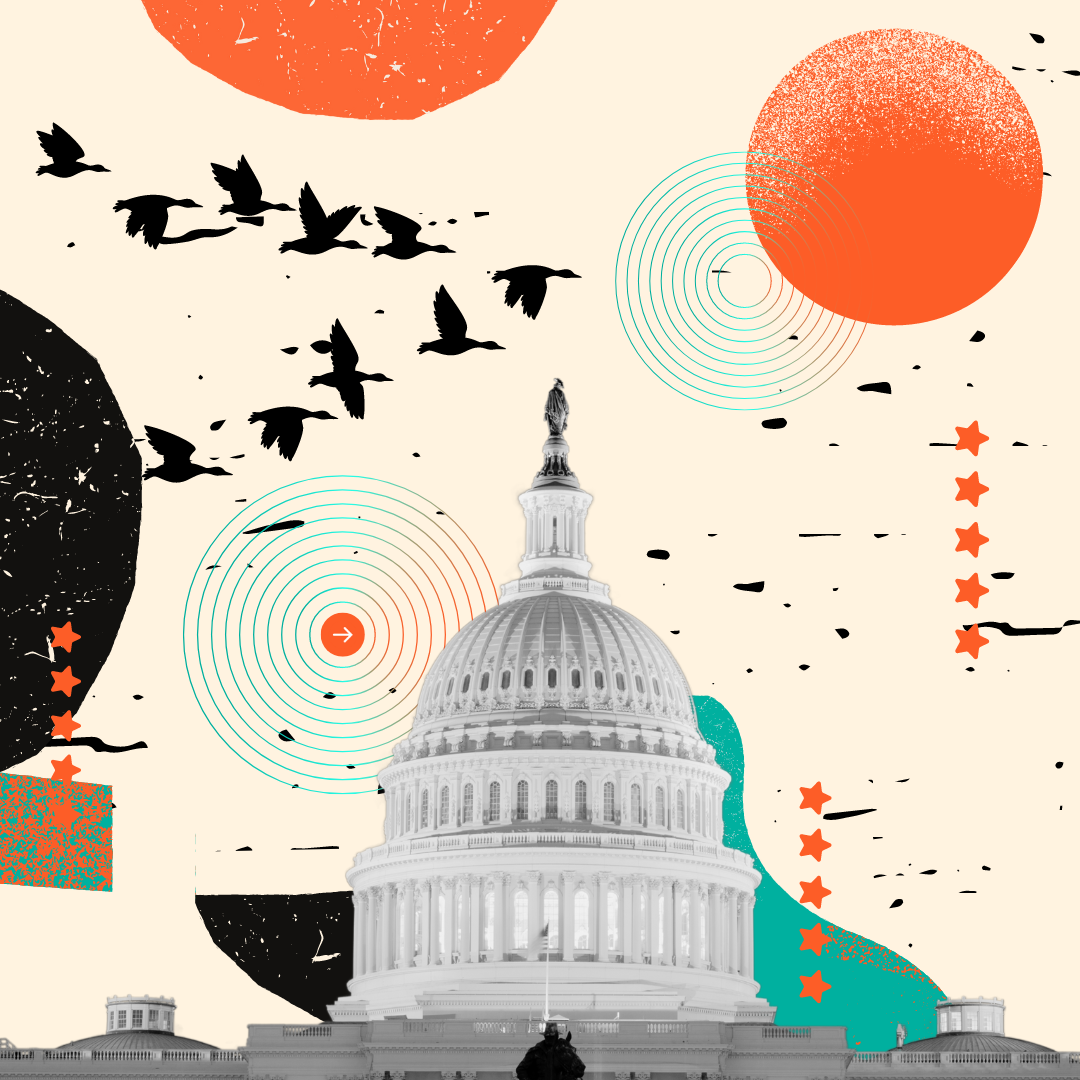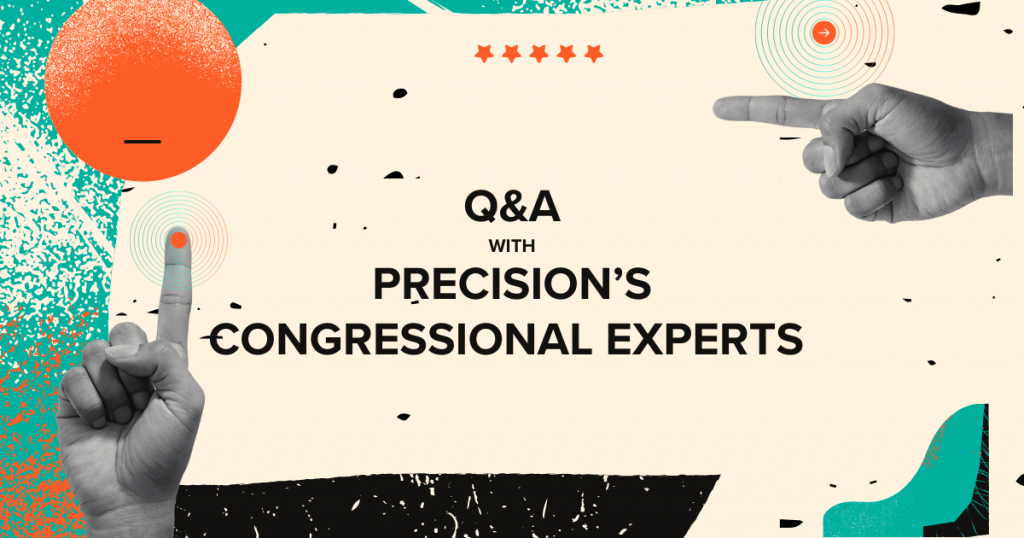Congress’ September Spree: How a short, tense session impacts public affairs efforts

Just three weeks of legislative session in September are all that stands between Congress and the election – a final opportunity for Senate Democrats and House Republicans to leverage their majorities to shape the agenda and frame the choice for voters. But with government funding expiring on Sept. 30 setting, how will Congress navigate its last chance for legislating before November?

Former Sen. Patty Murray’s Chief of Staff, Mike Spahn, Senate Democratic Policy & Communications Committee Staff Director Matt Williams, and Speaker Nancy Pelosi’s Communications Director Henry Connelly – break it down for you:

THE MAIN EVENT:
What will ride on the CR?
It has been 28 years since Congress completed the full appropriations process by the September fiscal year deadline, and in an election year the incentives are even stronger to delay dealmaking until after the election. Positioning and negotiating on a stop gap Continuing Resolution (CR) to keep the government funded at current levels until after the election are ongoing and will be the central conversation this month.
In the House, MAGA-wing hardliners are pressing Speaker Johnson to jam the Senate by tying the CR together with Republicans’ SAVE Act requiring proof of citizenship to register to vote – a gambit to refocus attention on illegal immigration which the GOP sees as their strongest campaign message. Expect Congress to also try to include some supplemental funding for natural disasters and add another extension of the National Flood Insurance Program.
In an election season that has taught us to expect the unexpected, we cannot rule out some high-wire act brinkmanship if Trump and House Republicans decide they need to shake up the board – even with Leader McConnell warning against any House GOP plan to put partisan poison pills onto the must-pass government funding bil
THE PARTING SHOTS:
Congress’s last chance to shape the narrative.
Watch for House GOP leadership and committee chairmen to try to open new lines of attack on Vice President Harris and Governor Walz through Committee hearings or votes on message bills before the House adjourns.
Floor time is a more precious commodity in the slower-moving Senate, so the opportunities for message votes to buoy the majority party are scarcer – particularly with so much procedural time needed to process the CR.
THE CODA: Policy staff quietly preparing for lame duck and 2025.
When Members head home for the final weeks of campaigning, congressional staff keep working behind the scenes to set the table for their return to Washington – especially on tax policy and early 2025 priorities. The whirlwind of political events this summer likely adjusted the two parties’ expectations for divided government next year – making this a pivotal stretch to begin dealmaking and strategizing for the lame duck and beyond.
More and more attention will be focused on taxes. Senate Republicans, who have long-opposed a House-passed bipartisan tax package, may be rethinking their strategy of holding out for a better deal next year. The tax package includes extending the enhanced child tax credit – a top Democratic priority – and three popular expired business tax cuts (R&D expensing, interest deductibility, 100 percent bonus depreciation). A version of this tax extenders package in the lame duck could be a prelude to the larger debate on the Tax Cuts and Jobs Act, which expires at the end of 2025.

Based on your experience, what matters most in the month ahead?
 Henry: Speaker Pelosi would often tell us, it’s all about the 3 Ms: Money, Message, Mobilization. Neither party will be in the mood to give the other side a win on a major policy that could shape the outcome of the election or take up press attention – and vulnerable members often just want to get out of DC and onto the campaign trail ASAP. But there is one bipartisan deal that does need to get done no matter what. In previous cycles, these CR negotiations before the election have been (relatively) little drama. But government funding votes this Congress have proven to be quite hazardous to Republican Speakers’ hold on the gavel.
Henry: Speaker Pelosi would often tell us, it’s all about the 3 Ms: Money, Message, Mobilization. Neither party will be in the mood to give the other side a win on a major policy that could shape the outcome of the election or take up press attention – and vulnerable members often just want to get out of DC and onto the campaign trail ASAP. But there is one bipartisan deal that does need to get done no matter what. In previous cycles, these CR negotiations before the election have been (relatively) little drama. But government funding votes this Congress have proven to be quite hazardous to Republican Speakers’ hold on the gavel.
 Matt: For Leader Schumer it’s all about keeping the majority. He’ll be looking out for his five incumbent U.S. Senators in tough races – Jon Tester (MT), Sherrod Brown (OH), Bob Casey (PA), Jacky Rosen (NV), and Tammy Baldwin (WI). The Senate caucus meets for lunch twice a week, and I know from firsthand experience sitting in the Mansfield room that these five senators won’t be shy about asking for anything they need from leadership or their colleagues. It might be extra floor time, spotlight on an important message bill or issue, avoiding a bad vote, or getting the heck out of D.C. as quickly as possible.
Matt: For Leader Schumer it’s all about keeping the majority. He’ll be looking out for his five incumbent U.S. Senators in tough races – Jon Tester (MT), Sherrod Brown (OH), Bob Casey (PA), Jacky Rosen (NV), and Tammy Baldwin (WI). The Senate caucus meets for lunch twice a week, and I know from firsthand experience sitting in the Mansfield room that these five senators won’t be shy about asking for anything they need from leadership or their colleagues. It might be extra floor time, spotlight on an important message bill or issue, avoiding a bad vote, or getting the heck out of D.C. as quickly as possible.
For Leader McConnell, it’s all about preventing self-inflicting damage that could cost his successor Senate control. That means keeping the government open and not having any risk of a shutdown right before the election.
 Mike: While the traditional conversation centers around the possibility of an October surprise, early voting opportunities across the country make a September surprise even more impactful. An increasingly likely rate cut from the Federal Reserve, any fallout from the 9/10 Presidential debate, and continuing tensions in Israel as the year anniversary of the Hamas attack approaches are all known unknowns that will play a role in driving conversation and action. The Hill will be bracing for the impact on each knowing that every day presents the possibility of a policy, or more likely political, game changer.
Mike: While the traditional conversation centers around the possibility of an October surprise, early voting opportunities across the country make a September surprise even more impactful. An increasingly likely rate cut from the Federal Reserve, any fallout from the 9/10 Presidential debate, and continuing tensions in Israel as the year anniversary of the Hamas attack approaches are all known unknowns that will play a role in driving conversation and action. The Hill will be bracing for the impact on each knowing that every day presents the possibility of a policy, or more likely political, game changer.
How should you be using this time before the election to prepare and advance their agenda and priorities?

Matt: The best public affairs campaigns feature compelling stories that crystalize the relevance of an issue and are told by a messenger your audience trusts. But identifying the right stories and spokespeople takes time. Coalitions and advocacy campaigns cannot afford to wait until after the election to start building a story bank and doing the research on which type of messenger will resonate most with your target audiences.
 Henry: The weeks and months right after the election are a unique time when each party’s priorities and positions are up for debate in a way they almost never are otherwise. Winners need to prioritize their campaign promises against the new Congressional landscape. Losers are gripped with soul searching on why they lost, what needs to change, and what pieces of the new agenda they will oppose and how. You need to be able to move decisively while the concrete is still wet to shape the agenda – and that means developing your messages, proof points, and scenario plans now.
Henry: The weeks and months right after the election are a unique time when each party’s priorities and positions are up for debate in a way they almost never are otherwise. Winners need to prioritize their campaign promises against the new Congressional landscape. Losers are gripped with soul searching on why they lost, what needs to change, and what pieces of the new agenda they will oppose and how. You need to be able to move decisively while the concrete is still wet to shape the agenda – and that means developing your messages, proof points, and scenario plans now.
On the Hill, your job centered on seeing corners and laying groundwork for longer term legislative and political success. What would you be doing right now to prepare for a successful 2025?

Mike: Divorce yourself from political outcomes and focus instead on key priorities likely to present opportunities under all circumstances. Chief among them: the expiration of far reaching tax policy provisions passed during the Trump Administration at the end of 2025.
Next year will be significantly consumed by conversation, positioning, advocacy and, eventually, legislating on tax policy. Now is the time to stake out clear principles and priorities while outlining a strategy that will improve the likelihood of a positive outcome. In 2012, my boss Sen. Patty Murray laid out principles and a strategy to strengthen the Democratic position more than six months before the Bush Tax Cuts expired. It’s never too early to start planning and engaging allies and the wider policymaking community in an effort to influence the Overton window for the eventual negotiations. Significant tax reform opportunities come around infrequently. And with a closely divided Washington making major legislative efforts all but impossible, the tax debate forced by the expiration at the end of the year is a massive opportunity with a disproportionate possibility of success under all political outcomes. If you haven’t started your work, you’re already behind.

Matt: Regardless of the issue, I would use this time to target, engage, and educate reporters and friendly staff that will be critical for influencing the narrative around my priorities further down the road. Remember, while it seems like the whole world is singularly focused on the election, dozens and dozens of reporters are still tasked with tracking policy priorities rather than engaging on the day to day of the campaign. That’s a playbook that served me well in Senate leadership when I was responsible for planning and executing caucus priorities–both in the minority and majority. By building foundational relationships you gain important political intelligence early – when the spotlight on the issue is not quite as bright – that will help inform your legislative and public affairs strategy. The need to engage in the political process varies widely, but preparing for incoming from employees, friends and allies is an essential step to avoid being backed into a corner and making a mistake when the pressure mounts.

